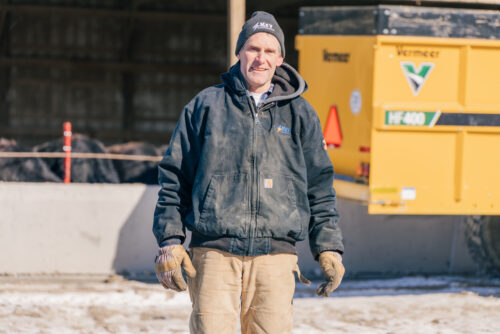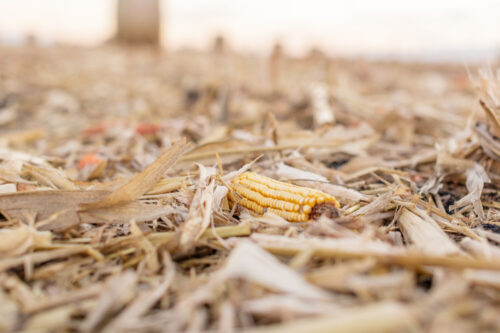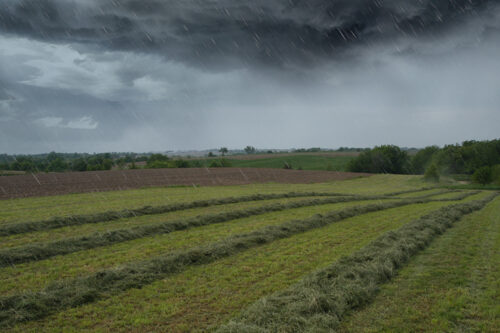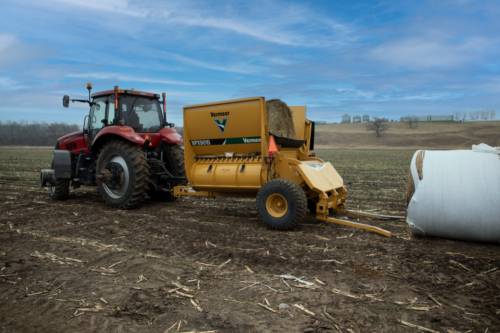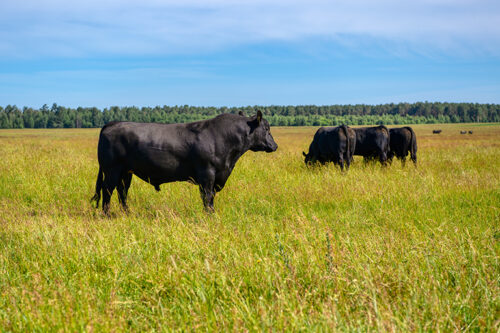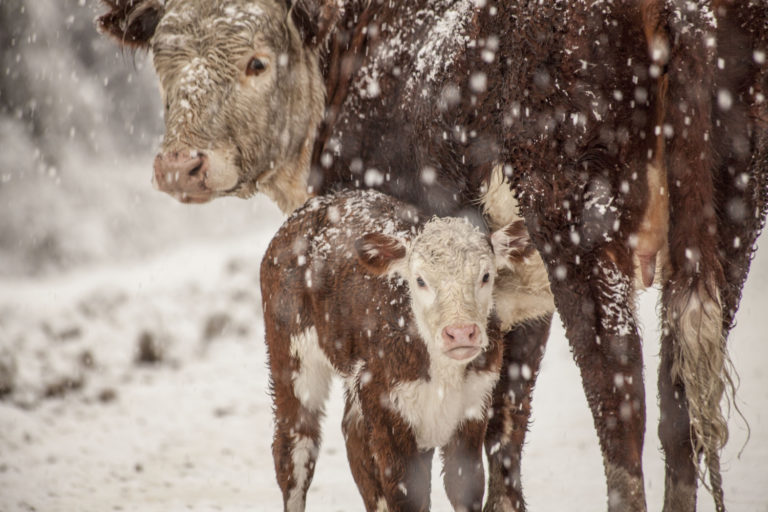
Tips for Calving in Cold Weather
February 2022
The right actions at the right times for healthy winter calving.
When it comes to winter’s coldest days, it is crucial to provide proper care for your facilities and livestock. Follow these tips to help keep your herd safe, prevent health issues in calves and give yourself more peace of mind while calving in cold weather.
- Prepare a shelter before calving begins.
If winter calving will take place inside a shelter, be sure it is fresh bedding, dry and draft free. Your facility should have bonding pens for cows and their newborn calves in cold weather and should stay in the pen for a day or two.
If calves will be born outside, set up windbreaks perpendicular to the prevailing wind to help shelter them (and the rest of your herd) from the winter weather elements, which can dramatically reduce their ability to cope with cold temperatures. Typically, windbreaks are designed to be 10 feet (3 m) tall and long enough to provide at least one foot of linear space per cow for shelter. If you are calving outdoors, you should also consider using temporary shelter such as warming boxes or a heated shop for calves showing signs of sickness.
- Windbreaks
If you are using a permanent windbreak:
- Require 8-inch (20 cm) posts that are set 4-5 feet (1-1.5 m) in the ground
- Porous material (helps to avoid snow drifts)
If you are using a temporary windbreak:
- Typically constructed with steel tubing and cross planks
- Should be wider than they are tall for adequate support.
- Porous material (helps to avoid snow drifts)
- Use the proper bedding.
Calves’ hair coats provide excellent insulation if they are clean and dry. But, if calves must lie on a concrete, rock or sand surface, heat will transfer from their bodies to that surface. This radiant heat loss can be prevented with lots of dry, clean bedding such as corn stalks or straw. Consider using the Vermeer® BPX9010 bale processor which can consistently and accurately spread bedding at ranges up to 50 feet (15.2 m).
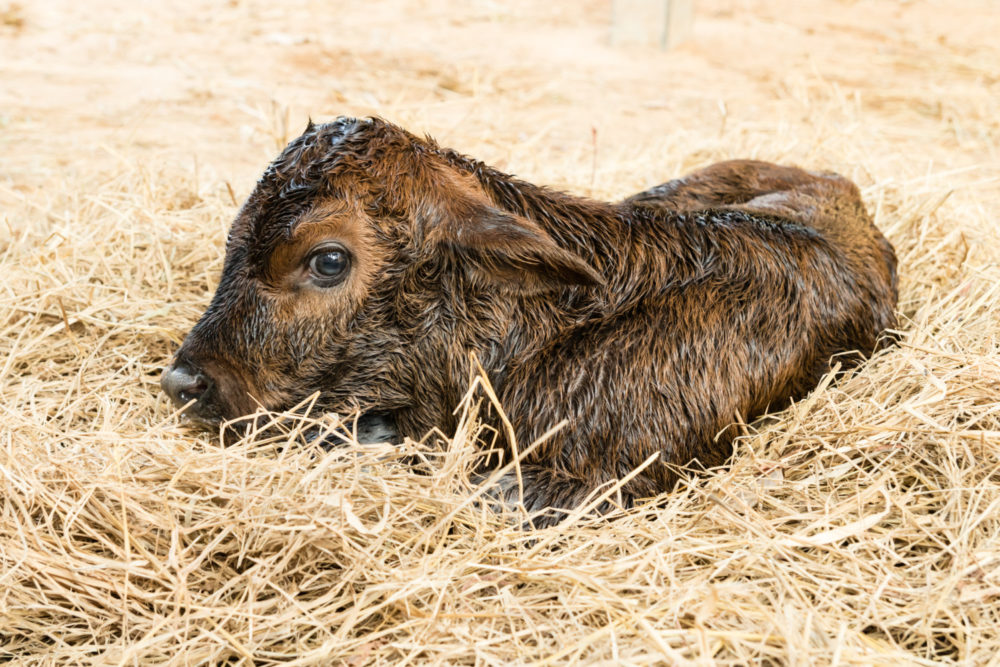
Deep bedding should cover the calf’s legs and let it nest down and surround itself with a barrier of warm air. A good way to test the depth of your bedding is to kneel in it. If your knee gets wet or feels very cold, the calf will get damp and cold when lying down.3
- Feed, feed, feed.
Once winter calves are born, the sooner they are standing and suckling, the better. They should eat four quarts of colostrum as soon as possible after birth to take in passive immunity and nutrients, plus the fluid helps increase blood volume and thereby improves circulation for warmth — which is especially crucial to calves in cold weather. Colostrum also provides the calf with an important source of energy, which helps it regulate its body temperature according to Farm Progress.4
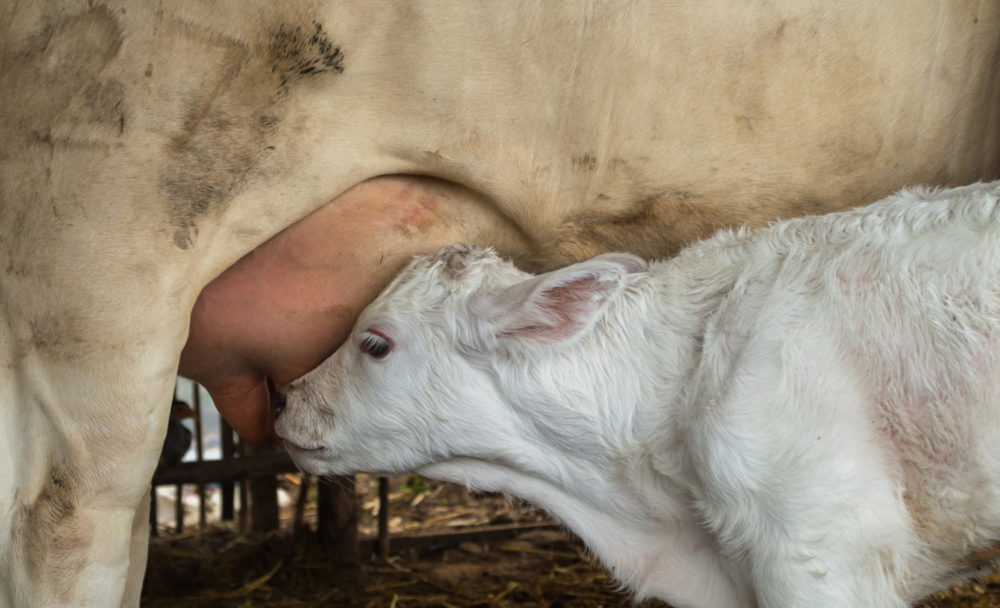
Bonus winter calving tips
Here are additional best practices for protecting newborn calves in cold weather:
- Remove snow from areas where cattle congregate to minimize future mud problems. Spread bedding in the areas where snow has been scraped away to encourage cattle to lie down.
- Don’t tag calves soon after birth in the winter. The tag may hinder blood flow to the ear, which would make it colder and more likely to freeze when temperatures and windchill are below zero.
- Midway through the calving season, move cows that have not calved to a new, clean environment to reduce the transfer of disease to newborn calves.
Calving in cold weather comes with unique challenges. But, when taking the right actions at the right times, you can successfully raise healthy winter calves. Contact your local Vermeer dealer to discuss how a BPX9010 bale process can help you care for your herd during winter calving.
1 Caring for Cow Herds During Cold Weather, Iowa State University Extension and Outreach, Iowa Beef Center.
2 https://extension.psu.edu/calf-management-tips-for-cold-weather
3 https://extension.umn.edu/dairy-news/raising-calves-thrive-winter
4 https://www.farmprogress.com/cow-calf/calving-cold-weather


